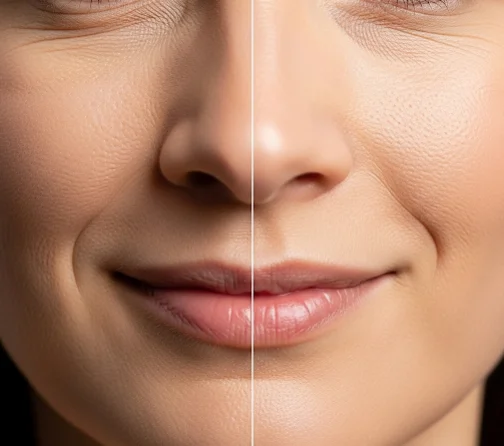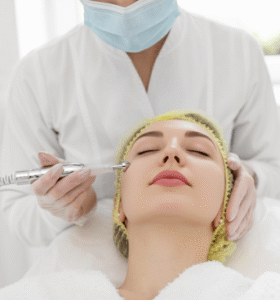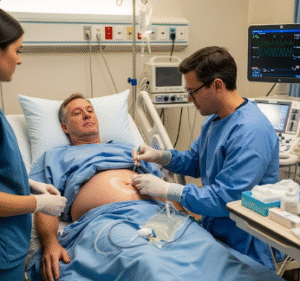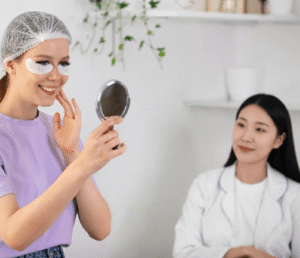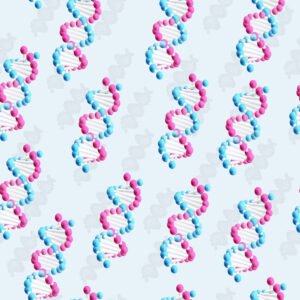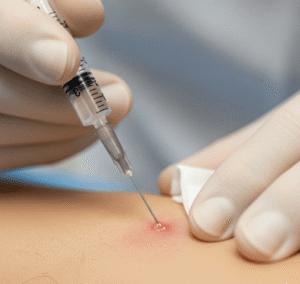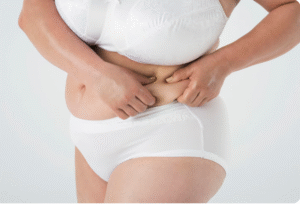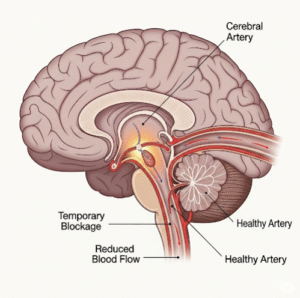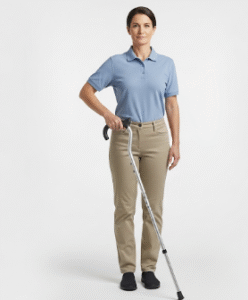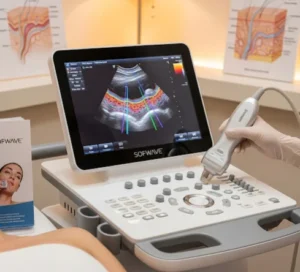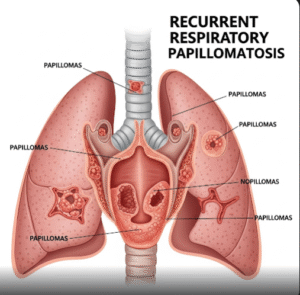What it is
Smile lines, also known as nasolabial folds, are the creases that extend from the sides of the nose down toward the corners of the mouth. While they are natural features of facial anatomy, they often deepen with aging, repetitive facial expressions, loss of facial fat, bone resorption, and skin laxity.
Smile line smoothing refers to treatments that reduce the depth and prominence of these folds, restoring a softer, more youthful facial contour. In Korea, smile line care is one of the most popular anti-aging procedures, typically achieved through a layered approach involving fillers, collagen stimulators, regenerative injectables, lasers, and lifting technologies.
Why it’s done
Patients seek smile line smoothing to:
- Soften deep nasolabial folds that create an aged or tired appearance.
- Restore youthful mid-face contours by replacing lost volume.
- Balance facial harmony between the cheeks, lips, and jawline.
- Prevent progression of folds by early treatment.
- Enhance confidence by rejuvenating facial expression.
In Korea, nasolabial fold correction is considered part of holistic lower face rejuvenation, often paired with marionette line softening and cheek volumization.
Alternatives
There are several approaches to smile line correction, depending on severity:
- Injectables
- Hyaluronic acid fillers → Most common, directly fill folds.
- Collagen stimulators (Sculptra, Ellansé, Radiesse) → Stimulate gradual tissue rebuilding.
- Rejuran Healer (PN injections) → Improves skin quality and elasticity.
- PRP (platelet-rich plasma) → Regenerates skin and improves tone.
- Energy-based devices
- HIFU (Ulthera, Shurink) → Lifts sagging mid-face tissue that contributes to folds.
- RF microneedling (Scarlet RF, INTRAcel) → Improves skin firmness and elasticity.
- Fractional CO₂ or erbium lasers → Resurface fine wrinkles around folds.
- Minimally invasive options
- Thread lifting → Lifts sagging cheeks to reduce fold depth.
- Fat grafting → Adds natural volume to smooth deep folds.
- Surgical options
- Facelift or mid-face lift for advanced aging cases.
Preparation
Before smile line treatment:
- Consultation → Korean clinics use 3D facial imaging to analyze fold depth, skin elasticity, and mid-face volume loss.
- Medical history → Review of filler history, skin conditions, or allergies.
- Pre-treatment care → Stop alcohol, smoking, and blood-thinners 3–5 days before.
- Lifestyle advice → Hydration, sunblock, and gentle skincare recommended.
- Expectation counseling → Results vary depending on severity and chosen method; multiple sessions may be needed.
How it’s Done
Smile line smoothing in Korea is often performed through combination treatments:
- Filler injection (most common)
- HA filler injected with microcannula to reduce fold depth.
- Layered technique for natural blending with cheeks and lips.
- Collagen stimulation
- Sculptra or Ellansé injected deeper for gradual rebuilding of volume.
- Rejuran or PRP added to improve skin texture and resilience.
- Energy-based tightening
- HIFU lifts sagging mid-face tissues.
- RF microneedling firms skin and smooths fine lines.
- Fractional lasers refine texture.
- Thread lifting
- Biodegradable threads inserted to lift cheeks and soften folds.
⮕ A session lasts 20–40 minutes; fillers show instant results, while collagen stimulators and regenerative injectables improve gradually over months.
Recovery
Recovery depends on the method:
- Fillers/Botox → Mild swelling or bruising for 2–5 days.
- Rejuran/PRP → Tiny bumps and redness for 1–2 days.
- RF/HIFU → Temporary redness or tingling for 1–3 days.
- Thread lifting → Swelling and bruising for 5–7 days.
- Surgery → Downtime of 2–3 weeks.
Korean clinics support recovery with:
✔️ Cooling packs and LED light therapy.
✔️ Soothing serums with centella asiatica and hyaluronic acid.
✔️ Post-treatment check-ups using 3D imaging.
Complications
Potential risks include:
- Temporary swelling, bruising, or redness.
- Overfilling, leading to unnatural puffiness.
- Asymmetry or uneven filler distribution.
- Thread-related irritation (rare).
- Surgical risks in advanced cases (infection, scarring, nerve damage).
Korean dermatologists reduce risks by using precision injection techniques, conservative dosing, and treatment plans customized to Asian skin anatomy.
Treatment Options in Korea
Korea offers some of the most advanced methods for smile line correction:
- Premium HA fillers → Restylane, Juvederm, Teosyal, and high-quality Korean brands.
- Collagen stimulators → Sculptra, Ellansé, Radiesse for long-lasting improvements.
- Regenerative injectables → Rejuran Healer and PRP paired with fillers for enhanced outcomes.
- Signature Korean protocols
- Mild folds: Filler + Rejuran.
- Moderate folds: Filler + HIFU or RF tightening.
- Severe folds: Collagen stimulator + thread lifting or fat grafting.
- Preventive care → Many patients in their 30s start small filler or Rejuran sessions early to prevent deep folds.
- Medical tourism appeal → Smile line treatment is a top request among foreigners visiting Seoul clinics for lower-face rejuvenation.
✅ Key Point: Smile line smoothing in Korea combines fillers, collagen stimulators, regenerative injectables, and lifting technologies, supported by K-beauty aftercare, to achieve natural, youthful, and harmonious facial rejuvenation.

